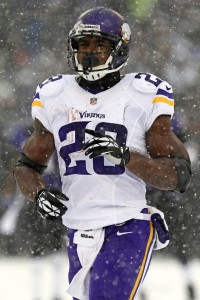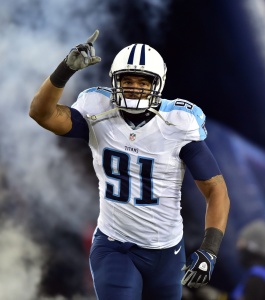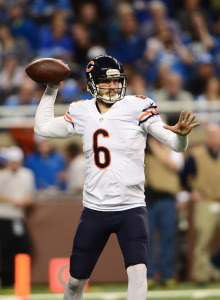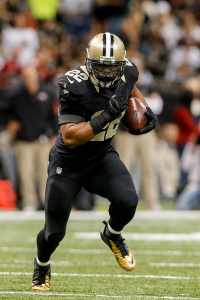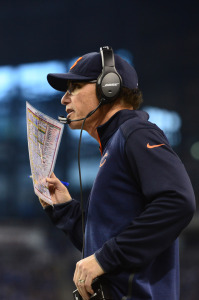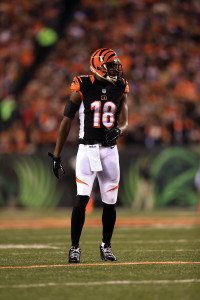Pending free agents:
- Tyson Alualu, DE
- Alan Ball, CB
- A.J. Edds, LB
- Geno Hayes, LB
- Sherrod Martin, S
- Jacques McClendon, G (restricted)
- Fendi Onobun, TE (restricted)
- Cecil Shorts, WR
- Will Ta’ufo’ou, FB (restricted)
- J.T. Thomas, LB
- Jordan Todman, RB (restricted)
- Teddy Williams, CB (restricted)
Top 10 2015 cap hits:
- Paul Posluszny, LB: $9,500,000
- Marcedes Lewis, TE: $8,200,000
- Justin Blackmon, WR: $5,785,625
- Luke Joeckel, T: $5,782,254
- Zane Beadles, G: $5,000,000
- Sen’Derrick Marks, DT: $4,825,000
- Chris Clemons, DE: $4,750,000
- Blake Bortles, QB: $4,694,273
- Red Bryant, DE: $4,500,000
- Josh Scobee, K: $4,387,500
Notable coaching changes:
- Offensive coordinator: Greg Olson replaces Jedd Fisch
- Hired 2014 Bills head coach Doug Marrone as assistant head coach and offensive line coach.
- Hired 2014 Bills offensive coordinator Nathaniel Hackett as quarterbacks coach.
Draft:
- No. 3 overall pick
- No traded picks
Other:
- Current projected cap room (via Over the Cap): $64.35MM
- Must exercise or decline fifth-year option for 2016 for WR Justin Blackmon.
- Top extension candidates: Marcedes Lewis, Bryan Anger
Overview
Ever since winning 11 games and earning a postseason berth in 2007, the Jaguars have been among the worst teams in the NFL, finishing with non-losing record just once (2010) and registering a 34-78 mark during that span. But there are reasons for optimism in Jacksonville, especially on the defensive side of the ball, where head coach Gus Bradley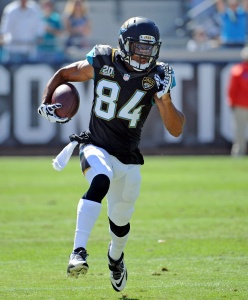 and coordinator Bob Babich led a unit that finished 20th in DVOA (16th in weighted DVOA), and featured contributions from unheralded players like Sen’Derrick Marks and rookies such as Telvin Smith.
and coordinator Bob Babich led a unit that finished 20th in DVOA (16th in weighted DVOA), and featured contributions from unheralded players like Sen’Derrick Marks and rookies such as Telvin Smith.
Most of the focus, however, was on the Jaguars’ offense, where rookie quarterback Blake Bortles led a cavalcade of other first-year players including receivers Allen Robinson, Allen Hurns, and Marquise Lee. Bortles, the third overall pick in last year’s draft, was mostly disappointing, completing just 59.8% of his passes for 2,908 yards, 11 touchdowns, and 17 interceptions while rating as the worst QB in the league according to Pro Football Focus (subscription required). But there’s hope that with another year of development from both Bortles and the receivers, improvements along the offensive line, and another good year from running back Denard Robinson, the offense (and the club as a whole) can take a step forward in 2015.
Key Free Agents
As a rebuilding team, the Jaguars have one the least-talented rosters in the NFL, and as such, there aren’t a ton of pending free agents who are considered must re-signs. The most notable name among the FA list is receiver Cecil Shorts, a four-year veteran who’s been among the most visible Jacksonville players in recent years. The 27-year-old is a solid possession receiver, but he had a down year in 2014, catching only 53 balls in 12 starts. He’s already been linked to other WR-needy teams such as the Browns, and given the Jaguars’ stable of young pass-catchers, I’d expect them to let Shorts walk.
On defense, former first-round pick Tyson Alualu is also headed for unrestricted free agency. He’s been something of a bust so far in his career; he only saw about 470 snaps last season and wasn’t effective when playing. The Jags have a nice rotation along the defensive line, and even if they want to add more players to their front five, they can look to free agency to do so. Alualu isn’t an integral part of the defense, so it doesn’t make sense to retain him.
Jacksonville also has a pair of linebackers — Geno Hayes and J.T. Thomas — eligible for the open market. The 27-year-old Hayes started 11 games last year, posting a +5.9 PFF grade on nearly 600 snaps. He should be re-signed on a short, low-cost deal. Thomas, on the other hand, shouldn’t return. On more than 700 snaps, the 2011 draftee registered a -14.8 PFF mark, performing especially poorly against the run.
One final free agent of note on defense is cornerback Alan Ball, who played in only seven games after tearing his biceps. He’ll be 30 years old when the season begins, but he’s a solid player, and if the club can bring him back on a modest contract, he could act as veteran insurance in a secondary filled with youngsters.
Possible Cap Casualties
Defensive lineman Chris Clemons was a high-profile signing for the Jaguars just last offeason, agreeing to a four-year deal worth $17.5MM. But despite his knowledge of Bradley’s scheme, he struggled immensely in 2014, grading as the second-worst 4-3 DE in the league per PFF. Jacksonville could save $4.75MM by releasing the 33-year-old, and wouldn’t accrue any dead money by doing so. The club might wait to see how their defensive line looks after free agency and the draft, and if they’ve made significant improvements, Clemons could be a goner.
Another veteran on defense, linebacker Paul Posluszny, missed most of the season with a pectoral injury. He’s due $9.5MM against the cap next yer, and the Jaguars could clear all but $2MM of that by cutting him. The 30-year-old is viewed as a team leader, however, and Bradley has indicated that “Poz” will return. Still, it doesn’t seem reasonable to pay an aging LB a base salary in excess of $7MM, especially one coming off an injury. Perhaps Jacksonville will ask Posluszny to take a pay cut, but if he declines, he could be cut.
On offense, tight end Marcedes Lewis is scheduled to have the second-highest cap hit on the team (behind Posluszny) at $8.2MM, an extremely high figure for a soon-to-be 31-year-old who caught just 18 balls in eight games. He’s heading into the final year of his deal — the Jaguars would clear $6.8MM by cutting him, leaving just $1.4MM in dead money. Elsewhere on the offensive side of the ball, running back Toby Gerhart is most likely on the outs. He was overtaken by Robinson, and won’t justify his $3MM cap hit.
One thing to be considered: the Jaguars have the most cap space in the league, with more than $64MM to play with. They don’t need any additional space, so if they want to retain the players listed above, they can, without it being detrimental to their financial situation. So someone like Posluszny, who might have some off-the-field or locker room value, is more likely to be retained in Jacksonville than he might be in other cities.
Positions Of Need
With that $64MM worth of cap space, the Jaguars are set up to spend on a free agent class that actually lines up well with some of their needs. Topping that list is pass-rusher, where the club could use one or even two big-name free agents. Any of the top edge guys could make sense, so I think the Jags could end up targeting one higher-priced FA and one mid-tier player. They have the financial room to sign, say, Jason Pierre-Paul, while also throwing a one-year dart on Brian Orakpo. Or they could target Jerry Hughes while also adding someone like Brandon Graham. There are any number of combinations that make sense for Jacksonville, but it must improve its pass rush.
The linebacking unit could also use an upgrade, especially if Posluszny doesn’t return. The Jaguars could take a look at David Harris, a solid veteran who could be a stabilizing presence on a young roster. Rolando McClain could also be a target — he’s had off-the-field trouble and could be facing another failed drug test, but with $64MM in cap room, perhaps he’s the kind of talented yet troubled player the Jags can afford to take a risk on. Malcolm Smith could also land in Jacksonville, as he’s familiar with Bradley from the duo’s time in Seattle.
In the back end, the Jags could use another safety to pair with Jonathan Cyprien. If the club wants a veteran leader in the secondary, Antrel Rolle could be a nice addition, but if they want to go younger, they could sign Rahim Moore away from the Broncos. Dawan Landry could also make a return to Jacksonville — he played for the team from 2011-12.
On offense, Jacksonville needs to add at least one offensive lineman. 2013 No. 2 overall pick Luke Joeckel has struggled since entering the league, but the team probably has to give him at least one more season to figure things out at left tackle. But on the right side, I could see the Jags targeting Bryan Bulaga, the No. 1 free agent RT available. The Packers like to retain their own free agents, but Jacksonville has the cap space to outbid them. Additionally, if the club wants to upgrade at center, Rodney Hudson would make sense if the Jags are willing to meet his reported $7MM per year demand. Alternatively, they could bring in the Raiders’ Stefan Wisniewski, who should be a bit cheaper.
The Jaguars have a good group of young pass-catchers, but given a) that they have so much money to throw around and b) the receiver class is loaded, I could see them adding a high-priced WR. They’d surely jump at the chance to add a Demaryius Thomas or Dez Bryant, but neither of them are likely to actually hit free agency. But Randall Cobb could be the perfect addition for the Jags. He’s only 24, so he’ll still be in his prime as the rest of the team progresses. Cobb is reportedly seeking a $9MM AAV, a fee Jacksonville could easily afford.
Extension Candidates/Contract Decisions
The Jaguars have a fifth-year option decision to make on receiver Justin Blackmon. The 25-year-old has only played in four games since 2013, but he’s reportedly making good progress towards reinstatement. But given his off-the-field trials, there’s no way the Jaguars can justify exercising his option.
Jacksonville doesn’t have a ton of extension candidates, but they could look to tack on a few years to Lewis’ deal in the hopes of bringing down his 2015 cap hit. It’s possible that the club will just release the tight end instead, but if they don’t, restructuring his deal could save the Jags some money.
Overall Outlook
The Jaguars need to take a step toward respectability in 2015, and a successful offseason could help the team head towards that goal. Armed with a ton of cap room and the No. 3 overall pick, Jacksonville should be able to make improvements in nearly every area it deems necessary. Adding a few pass rushers, and getting some line help and perhaps another weapon for Bortles, could be the first step in the surge toward a winning record.
Information from Over The Cap was used in the creation of this post. Photo courtesy of USA Today Sports Images.
